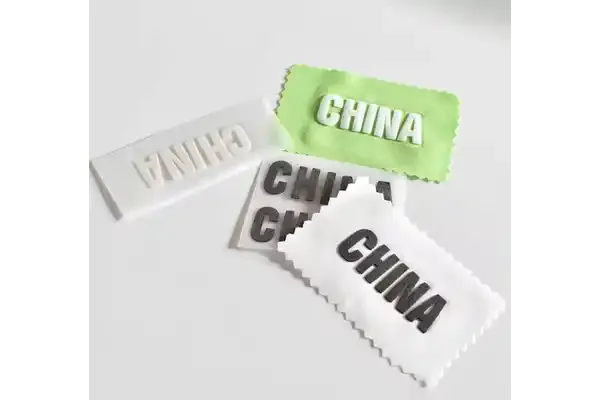Introduction
Flock printing, a unique and versatile textile printing technique, has been utilized across various industries for decades to create captivating and tactile designs. This article will delve into the world of flock printing, exploring its origins, evolution, materials, process, applications, advantages, and limitations. By understanding the intricacies of flock printing and its current innovations and trends, readers will gain insight into the future outlook of this fascinating printing method.
Flock Printing
Have you ever felt the irresistible urge to run your fingers over a velvety design on a t-shirt or a poster? That magical texture is often the result of flock printing - a unique method that adds a touch of luxury and sophistication to various surfaces.
Imagine soft, fuzzy fibers being applied to a surface to create a raised, velvety texture. That, in a nutshell, is flock printing. It's like giving your designs a cozy sweater they can snuggle into.
Historical Background
Flock printing has been around longer than avocado toast. Dating back to the 17th century, this technique was initially used to mimic expensive textiles like velvet, giving the masses a taste of the luxurious life without breaking the bank.
From humble beginnings to a technique cherished by designers worldwide, flock printing has come a long way, like a caterpillar turning into a velvety butterfly.
Origins of Flock Printing
Back in the day, flock printing was all about imitating the plush feel of velvet without the hefty price tag. It was a game-changer, making rich textures accessible to the common folk.
Technological Advancements
Fast forward to today, and flock printing has evolved with technological advancements. Modern machinery and innovative materials have taken this technique to new heights, allowing for greater precision and creativity in design.
Materials and Equipment for Flock Printing
Just like a chef needs the right ingredients and tools to whip up a culinary masterpiece, flock printing requires specific materials and equipment to work its velvety magic.
i. Flock Fibers
The secret sauce of flock printing lies in the fibers. These tiny, fuzzy particles come in various colors and lengths, allowing for endless possibilities in texture and design.
ii. Adhesives and Binders
Think of adhesives and binders as the glue that holds the flock fibers in place. They play a crucial role in ensuring your velvety creation sticks around for the long haul.
iii. Printing Equipment
From precision applicators to high-tech machinery, the right printing equipment can make or break a flock printing project. It's like having the perfect paintbrush for your masterpiece.
The Flock Printing Process Explained
Curious about how that velvety goodness comes to life? Let's peek behind the curtain and unravel the flock printing process step by step.
i. Preparation Steps
Before diving into the fuzzy fun, proper preparation is key. From prepping the surface to selecting the right fibers, getting these steps right sets the stage for a successful flock printing endeavor.
ii. Application Techniques
It's time to get hands-on (or maybe hands-fuzzy) with the application techniques. Whether it's electrostatic flocking or screen printing, the way you apply those fibers can make all the difference in the final result.
iii. Curing and Finishing
Once the fibers are in place, it's time to seal the deal with curing and finishing. This step ensures that your velvety creation stands the test of time, maintaining its soft texture and vibrant appearance for years to come.
Applications and Uses of Flock Printing
i. Apparel and Fashion Industry
In the world of fashion, flock printing adds a velvety touch to garments, making them stand out from the crowd. It's like giving your clothes a little hug - cozy and stylish.
ii. Automotive and Home Decor
Flock printing isn't just for your closet; it's also found its way into your car seats and throw pillows. Elevate your ride or your living space with a touch of fuzzy luxury.
Advantages and Limitations of Flock Printing
i. Pros of Flock Printing
Flock printing is like the chameleon of the printing world - it can adhere to various surfaces and adds a tactile element that's hard to resist.
ii. Cons of Flock Printing
On the downside, flock printing can be a bit high-maintenance. Just like that one friend who always needs extra attention, flock designs may require special care to maintain their plush appearance.
Innovations and Trends in Flock Printing
i. New Technologies
From advanced machinery to cutting-edge materials, Flock Printing is getting a high-tech makeover. It's like upgrading from a flip phone to a smartphone - sleek and efficient.
ii. Sustainability Efforts
In a world focused on eco-friendliness, flock printing is stepping up its game. With sustainable practices and materials, it's not just soft on your skin but also the environment.
Future Outlook for Flock Printing
Flock printing is here to stay, bringing a touch of texture to a flat world. With advancements in technology and a nod to sustainability, the future looks fuzzy and bright for this tactile printing technique. So, go ahead and flock to your world with style and flair!
Conclusion
Flock printing continues to be a valuable tool for designers and manufacturers seeking to add texture and visual interest to their products. As technology advances and sustainability becomes increasingly important, the future of flock printing looks promising with new techniques and eco-friendly practices on the horizon. With its rich history and diverse applications, flock printing remains a timeless and impactful method in the world of textile design and production.










0 Comments